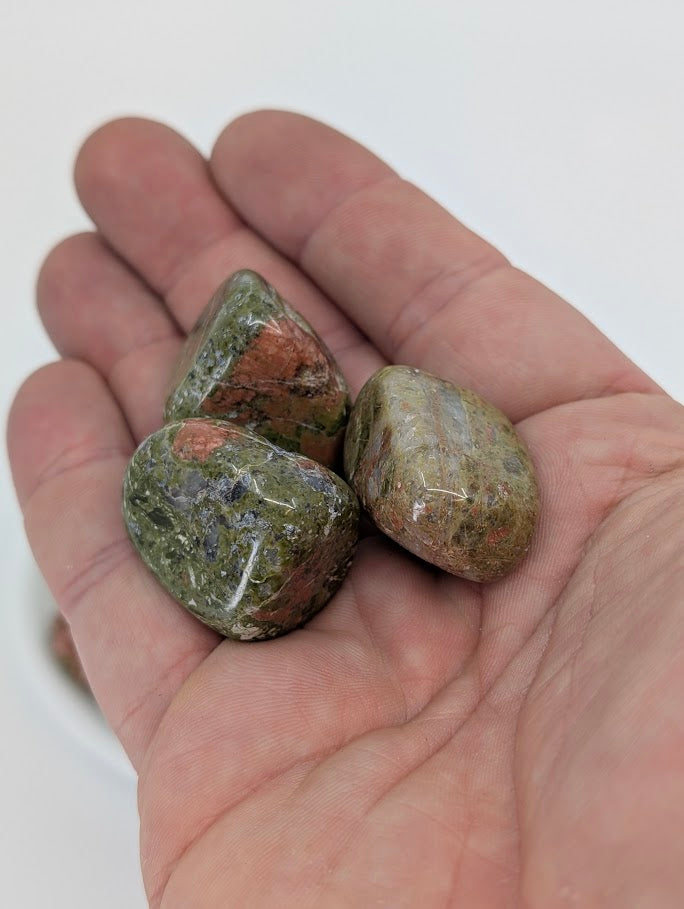Legacy Crystals and Minerals
Unakite Tumbled Stone — A Grade
Unakite Tumbled Stone — A Grade
Couldn't load pickup availability
Share
Unakite is a distinctive metamorphic rock composed primarily of green epidote, pink orthoclase feldspar, and clear to milky quartz. These A-grade tumbled stones exhibit a well-balanced mix of color, fine grain, and polish — capturing the natural harmony of green and rose-pink tones that make Unakite a long-time collector and metaphysical favorite.
Purchase Options
- Single Stone: 1 piece (~25 – 45 g)
- 250 g Lot: ~6 – 10 stones (⭐ Best Value)
Color & Appearance
A-grade Unakite shows a rich blend of olive-green epidote with salmon-pink feldspar and white quartz veins. Each stone is uniquely patterned, with smooth polish and consistent tone contrast. The colors are natural — no dye or treatment — and each piece displays the earthy charm that defines this metamorphic gemstone.
Overview
Unakite forms through the metamorphism of granite, where hydrothermal alteration converts plagioclase feldspar into green epidote while retaining original quartz and orthoclase. This transformation creates a rock known for its harmonious blend of colors and mineral textures.
Composition: Epidote + Feldspar + Quartz
Formation: Metamorphosed Granite (Hydrothermal Alteration)
Structure: Polymineralic (Mixed Silicate Rock)
Geological Source Environment: Typically found in metamorphic zones along granitic intrusions and river-worn deposits.
Metaphysical Notes
Unakite is often regarded as a stone of emotional healing and balance. It’s said to help align the heart and mind, encouraging calm reflection, compassion, and renewal — making it popular for both grounding and heart chakra work.
Why You'll Love It
- Natural mix of green epidote and pink feldspar
- High polish with distinct color contrast
- Symbol of emotional balance and grounding
- Completely untreated — authentic and natural
Trade Name Note: “Unakite” is the accepted trade name for the metamorphic rock composed of epidote, feldspar, and quartz. It is named after the Unaka Mountains in the U.S., where it was first described.






